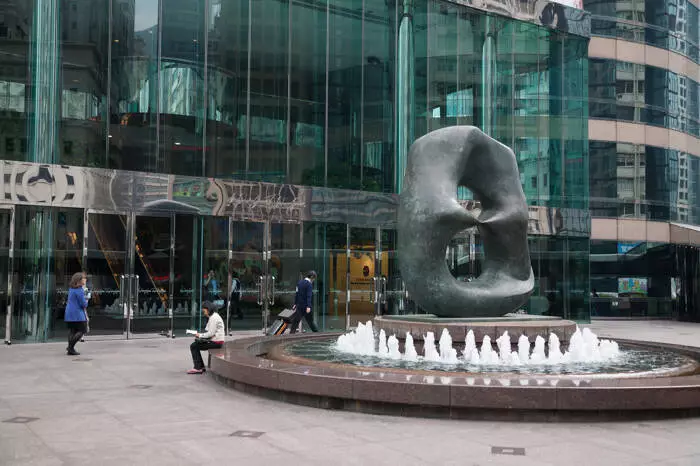The Hang Seng Index is currently experiencing a crisis that reflects the broader challenges faced by Asian markets. Over the past week, it has been impossible to ignore the persistent downturn—now extended to five consecutive weeks—with an alarming drop of 8.47%. This decline can be traced back to escalating trade tensions that have consistently tarnished investor sentiment, particularly in Hong Kong and mainland Chinese stocks. Notably, technology and automotive sectors have been the hardest hit, signaling severe concerns about their futures.
As the global stage becomes increasingly fraught with trade disputes, investors are signaling their anxiety through rapid sell-offs. The Hang Seng Technology Index, which reflects the performance of tech stocks, fell sharply by 7.77%. The giants of the sector, including Alibaba and Baidu, saw their stock prices plunge dramatically—by 16.6% and 9.91%, respectively. This downturn can largely be attributed to the increasing pressure from U.S. trade policies aimed at economically squeezing China, further dampening the local market’s outlook.
Automotive Sector Under Siege
The automotive sector, particularly electric vehicle (EV) manufacturers, has not fared well in this turbulent environment. Companies such as Li Auto and NIO Inc. experienced substantial declines of 7.54% and 9.39%. Despite statements from Beijing clarifying that China does not export EVs to the U.S., the specter of tariffs looms large, exacerbating fears within an already beleaguered industry. The current international climate brings into question whether these companies can innovate rapidly enough to stay competitive while facing unyielding external pressures.
Meanwhile, a comparative analysis with the main land’s markets reveals some interesting dynamics. The CSI 300 and Shanghai Composite Index showed more resilience, losing only 2.87% and 3.11%, respectively. Analysts note that the potential for new announcements related to stimulus from Beijing could serve as a buffer against deeper downturns, though this offers little solace to those heavily invested in the Hang Seng.
Gold’s Resurgence Amidst Market Turmoil
Conversely, the surge in gold prices denotes an increasing demand for safe-haven assets during uncertain times. Gold prices recently peaked at a record high of $3,245, ultimately closing the week at $3,238, a notable increase of 6.61%. This steep rise can be directly linked to the fallout from the U.S.-China trade conflicts, which are driving investors toward tangible assets perceived as less volatile than equities.
Interestingly, while some sectors retreat, commodities like gold thrive. The U.S. bond market alongside a sell-off in the dollar seems to support this bullish trend. Nevertheless, the energy sector isn’t experiencing a similar refuge; WTI crude oil prices fell by 1.84% to $60.78, reflecting fears of a weakening global demand that permeate throughout the market.
International Markets: Diverging Paths
Shifting focus to other regions, the ASX 200 experienced minor fluctuations, falling by 0.28%, in the week ending April 11. Nonetheless, the proposed changes in U.S. tariffs released some pressure off the Index, allowing it to recover from a low of 7,160 to a close at 7,647. The mining sector was notably affected, with giants like BHP Group and Rio Tinto witnessing declines as well.
Meanwhile, remarkably, the Nikkei index managed to gain 1.30%, defying the broader trend seen in nearby markets. The decline of levies on Japanese goods from 24% to 10% seems to have fueled demand for Nikkei-listed stocks. Still, a stronger yen constrained full-scale growth, revealing the complex tug-of-war between currency strength and stock market stability.
The landscape is filled with uncertainty as investors prepare for critical announcements from Beijing regarding potential stimulus measures, key economic indicators, and the ongoing tumult of global trade negotiations. As the volatility continues, traders are urged to remain vigilant, keeping a keen eye on geopolitical risks and regulatory shifts that could dictate market trajectories in the coming weeks.

